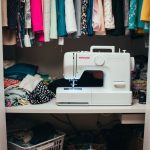How to Make a Statement with DIY Accessories: Bold Tips and Ideas
Sustainable DIY Practices
Engaging in sustainable DIY practices allows us to create unique accessories while being eco-friendly. By choosing eco-friendly materials, minimizing waste, and understanding the ethics of handmade accessories, we can make fashionable accessories with a conscious mindset.
Eco-Friendly Materials and Techniques
Using eco-friendly materials is a key aspect of sustainable DIY practices. We can start by sourcing recycled or upcycled materials. For instance, old fabrics, broken jewelry parts, and even discarded leather can be repurposed into statement jewelry. Natural materials like wood, hemp, and organic cotton are also excellent choices.
Techniques that minimize harm to the environment are essential. Avoiding toxic glues and opting for natural adhesives is a good practice. We can also use hand tools over power tools to reduce energy consumption. Simple methods like tie-dye with natural dyes or hand-stitching can make our accessories both stylish and sustainable.
Minimizing Waste in DIY Projects
Minimizing waste is crucial for sustainable DIY projects. One effective approach is to plan our projects meticulously to use materials efficiently. We should measure twice and cut once to avoid unnecessary waste of fabrics and other supplies. Leftover materials can often be transformed into smaller accessories like earrings or brooches.
Recycling scraps from previous projects into new creations helps reduce waste. For example, fabric remnants can be woven into belts or headbands. Keeping a dedicated box for small scraps encourages creativity in finding new uses for them. Another strategy is to donate or exchange surplus materials within our crafting community or participate in material swap events.
The Ethics of Handmade Accessories
The ethics of making handmade accessories are grounded in crafting with integrity and transparency. We should prioritize fair trade materials, ensuring that suppliers adhere to ethical labor practices. Supporting local artisans and small businesses not only boosts community economies but also often guarantees more ethically produced materials.
Being transparent about our processes and materials builds trust with those who purchase or admire our accessories. We can document our creation process and share stories behind upcycled pieces. By valuing craftsmanship and ethical sourcing, we contribute to a more responsible and conscientious fashion industry.
In embracing sustainable DIY practices, we can create beautiful, statement accessories that reflect our values and commitment to the environment. Let’s make every piece not just a fashion statement, but a statement of our dedication to sustainability.
Promoting Your DIY Accessories
Promoting our DIY accessories effectively can amplify our creative venture’s success. From leveraging social media wisdom to participating in local markets and utilizing online platforms, we have multiple strategies at our disposal.
Social Media Tips for Aspiring Designers
Utilizing social media is crucial for elevating our handmade accessories. We should start by creating dedicated accounts on platforms like Instagram, Pinterest, and Facebook. Posting high-quality photos of our creations with engaging descriptions and relevant hashtags can attract potential customers.
We should engage with our audience by responding to comments and messages promptly. Collaboration with influencers or other DIY enthusiasts can help broaden our reach. Hosting giveaways or live tutorials can also create a buzz and drive engagement. Consistency in posting and maintaining a cohesive aesthetic aligned with our personal style will build a loyal following.
Craft Fairs and Local Markets
Participating in craft fairs and local markets offers a unique opportunity to showcase our DIY accessories. These events allow us to engage directly with customers, receive immediate feedback, and establish personal connections. It’s important to have an eye-catching display that highlights our work’s uniqueness.
Offering exclusive deals or one-of-a-kind pieces can entice shoppers. We should also have business cards or flyers handy to provide additional information and direct potential customers to our online presence. Networking with other local artisans can lead to collaborative opportunities and increased visibility within our community.
Online Platforms and E-commerce
Setting up an online store on platforms like Etsy, Shopify, or even our own website can significantly expand our customer base beyond local markets. We need to focus on clear, attractive photos and detailed product descriptions to convert visitors into buyers. Utilizing keywords relevant to our handmade accessories can improve our search rankings.
Providing excellent customer service through timely communication and reliable shipping is essential for maintaining positive reviews and repeat business. Promotions, such as limited-time offers or bundle deals, can drive sales. Building a strong online presence will complement our efforts at craft fairs and via social media, creating a well-rounded strategy for promoting our handmade projects.



